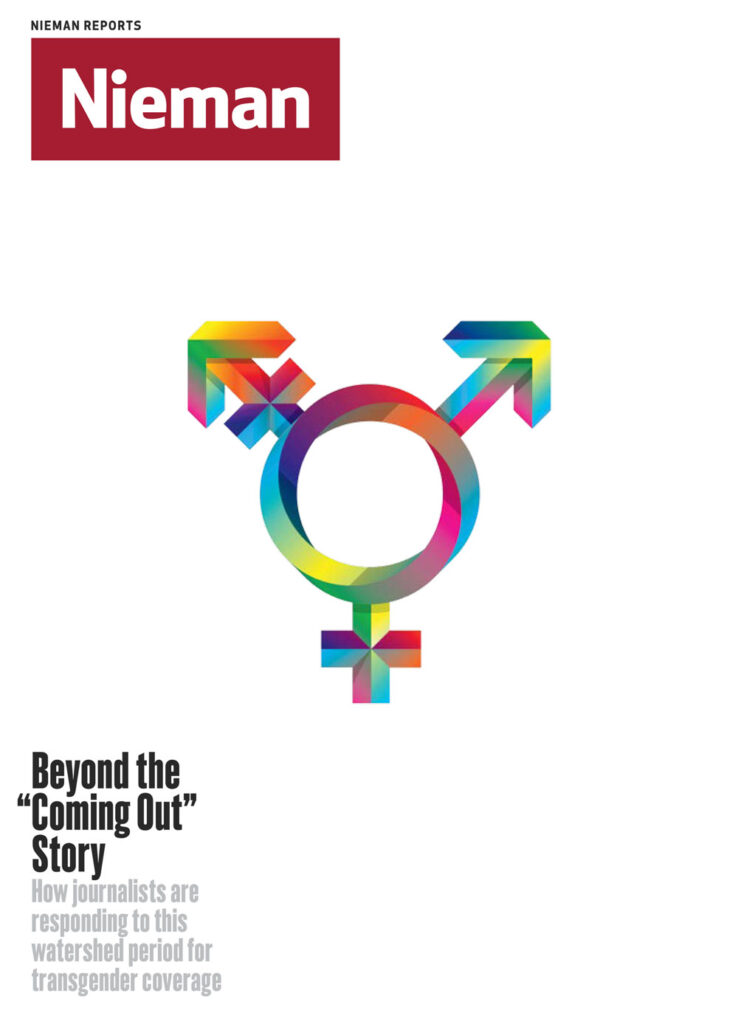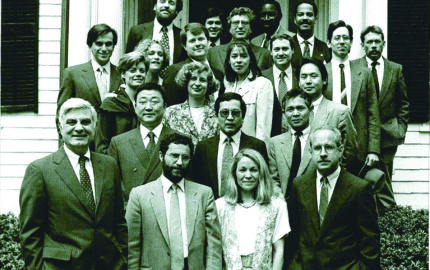On a recent visit to my daughter’s college campus, I heard student musicians talking about a New York Times Magazine profile, “The Passion of Nicki Minaj,” but it wasn’t what the Times likely hoped for when putting a rapper on the cover. Rather than appeal to the generation that has made Minaj one of pop music’s reigning powers, the story was banished to a dreaded archive. “It’s out of touch,” my daughter said.
I wished Times editors could have heard what I did: a sophisticated critique of the writer’s misreading of Minaj’s art and views on race and feminism, and disappointment that the musician’s commentary on slights to black female artists had been trivialized as mere revenge drama. There were other cringe-worthy tells I had overlooked in my own reading of the story, including misspellings of common rapper slang.
“If you want to take pop culture seriously,” my daughter continued, “then you have to take Nicki Minaj seriously. But she talked down to her and discounted the feelings of a generation of black artists.”
When I returned home, I searched for published reactions to the story and found that publications as varied as Salon, Feministing, and USA Today had detailed its shortcomings, explaining Minaj’s abrupt dismissal of the reporter: “I don’t care to speak to you any more.”
Salon, perhaps hyperbolically, called the profile “one of the most condescending and intellectually offensive pieces of journalism written on a subject this year,” adding: “That no editor on staff knew or cared enough to correct her misspelling of both ‘diss tracks’ and ‘gold grills’ is further proof of co-signed intellectual ignorance.”
Embedded in the criticisms of this one story are so many of the issues challenging journalism more broadly. Issues of credibility. Of newsroom diversity. Of cross-generational competence. Of authenticity. And unlike many of the forces buffeting journalism, these are within our control.
The students correctly assumed the writer was neither particularly young nor African American. They didn’t disqualify otherwise experienced journalists from writing about rap, but were critical of news organizations that acknowledge the primacy of expertise in some areas, but not all. They have expectations of equality that many of our news outlets do not reflect. By almost every measurement, the U.S. journalism workforce is out of step with the nation’s demographics.
By almost every measurement, the U.S. journalism workforce is out of step with the nation’s demographics
I recently attended a Corporation for Public Broadcasting retreat and asked “Frontline” executive producer Raney Aronson-Rath about her most pressing concerns. Building teams, she said—teams that can be effective in creating the journalistically ambitious and digitally sophisticated work she aspires to. Succeeding at this is vital, yet at many news shops, colleagues fail to find common cause with their most important allies—other colleagues. Were there young diverse journalists at the Times whose knowledge could have improved the magazine story, or do legacy newsrooms still make it hard for those voices to be heard? The leak in 2014 of the Times innovation report underscored organizational roadblocks that are not unique to that newsroom, one of our greatest journalistic enterprises, but common to many.
Here’s one example. At its annual meeting, the Public Radio Program Directors Association reviewed a worrying drop in millennial listeners and Tayla Burney, a young producer from WAMU in Washington, D.C., remembers the discussion this way: “A gentleman … referenced the challenge of capturing a younger audience and said something along the lines of ‘we know millennials are lazy.’ He prefaced it by saying it was something he’d heard from an ‘expert’ … It struck me as a weird thing to say about any audience you would like to appeal to. And about a cohort that … probably works for you within your organization. In short, it’s a lazy way to think about a huge area for potential growth.”
In an interview with recent Knight Nieman Visiting Fellow Melody Kramer, Burney said she created a Facebook page for public media millennials and posted: “WE ARE HERE! We are working for you—tirelessly!—and we are so passionate about this work and excited about the future.”
The workplace estrangement Burney describes is not limited to generational issues, but a clear echo of the technology gulf some still experience. As part of the annual Nieman Lab predictions package, we asked Alisha Ramos of Vox Media to tell us what she foresaw for 2015. “Reporters, designers and developers become BFFs” was the optimistic headline on her story, but her essay described a wary environment.
“Many of our writers come from organizations where developers were either nonexistent or huddled in a dark, shadowy corner somewhere,” she wrote. “And on the flip side, many of our developers have never worked with journalists or in newsrooms.” She cautioned both to stop viewing each other as “alien breeds,” squandering the potential to create their best work together.
Building an integrated newsroom, she observed, “means building a culture where developers and writers can work together, in parallel, to solve a common problem and tell a story together. Have respect for one another.” When I read that sentence I thought two things: 1) she was entirely right; 2) isn’t it past time we need to say so?
This semester I heard a talk at the Kennedy School by Peter Hamby, Snapchat’s news chief. As a political reporter at CNN, he once pitched a story about presidential candidate John Edwards’ early use of Twitter. His editor responded: “Don’t ever say the word Twitter in my presence again.”
The story could end there, another anecdote about the failure of the management class to understand emerging technologies. But after the talk, I read a paper Hamby wrote as a Harvard Shorenstein fellow analyzing the use of Twitter during the last presidential campaign. What Hamby offered was a more nuanced description of what is gained and what is lost when old and new forms of reporting collide and journalists are not aligned. The chasm in so many news organizations was evidenced in these two quotes from campaign operatives:
In this corner: “To complain about the triviality of Twitter and glorify the golden era of journalism is ridiculous. For starters, there was no such thing. Letting a bunch of cranky old white men determine what they deigned worthy of the masses’ ears only served them and the ruling elites who were in on the joke.”
And in this corner: “Everything that lends itself to the free flow of unfiltered, unreflective, unedited information has eroded the quality of political reporting.”
Who is right? In some measure, both. It is now unimaginable that I would watch a political debate, or even a Patriots game, without Twitter as a companion. I like knowing what smart journalists and commentators know as soon as they know it. BuzzFeed’s Ben Smith crushed the old rules in 2012 when, just 40 minutes into a presidential debate, he posted, “How Mitt Romney Won the First Debate.”
“Smith was only reporting what was obvious to any political junkie with half a brain,” Hamby wrote. “Obama was stumbling badly and quickly losing control of the narrative. Smith just didn’t feel the need for the bell to ring before posting his story. The judges of Twitter had already delivered their verdict.”
We’re unlikely to reverse that pattern, happily so for the admitted minority of Americans who consume live news that way.
But it is also true that much of the instant discourse is incremental and noisy. The late David Carr, The New York Times’s brilliant media critic, told Hamby: “I unfollowed a lot of political reporters because you are tweeting for your colleagues, you are not tweeting for me. I would say, put the phone in your pocket. Start focusing on the people that are in front of you.”
Carr was a rare bridge across worlds, the ink-stained reporter who held tight to the journalism of verification, but intoned that prescient line from “No Country for Old Men”: “You can’t stop what’s coming.” David understood the tensions innate to the shifting landscape in what still often feels like two-nation newsrooms.
What strikes me every year is how much each generation craves the other’s knowledge
At the Nieman Foundation, we annually assemble a class of fellows drawn from across the globe and an array of disciplines. Some come from the world’s largest news gathering enterprises, others from one-person start-ups. Some have never known a non-digital world, young enough to be the children of more experienced fellows. But what strikes me every year is how much each generation craves the other’s knowledge.
In building this newsroom-like environment from scratch, we ask each fellow to take responsibility for defining the character of the class. What are their expectations of each other? What sort of culture will they build to allow them to do their best work?
Because so many fellows come from news organizations where questions of culture have long been settled, often at the top, my challenge to them is empowering. Taking responsibility for building something so important has spawned amazing partnerships. No one in these groups is just a columnist or podcaster or editor, but a collaborator responsible for learning what one doesn’t know and teaching what one does. In an industry where knowledge transfer is our job, we are often very poor about doing that in our own newsrooms.
In the past two years alone, our fellows have been promoted out of their Nieman year to become editor in chief of El Mundo in Madrid, digital editor in chief of Le Monde in Paris, leader of a Google innovation fund in France, director of business partnerships for ProPublica in New York, vice president for digital at Univision, and more. In each case, they carry a model for creative collaboration that I hope is making room for all the talent in their shops.
The story of Nicki Minaj is a small example of why hiring diversity and newsroom inclusion is material. But the stakes are existential if we consider the vast audiences we’ve yet to reach and the talents it will take to claim them. Someone you work with—or haven’t yet hired—knows something you need to know to succeed.
Many of Minaj’s lyrics wouldn’t make it past an editor but you can quote her on this: “We’re just getting started.”
(This column was adapted from a talk to the Corporation for Public Broadcasting.)




